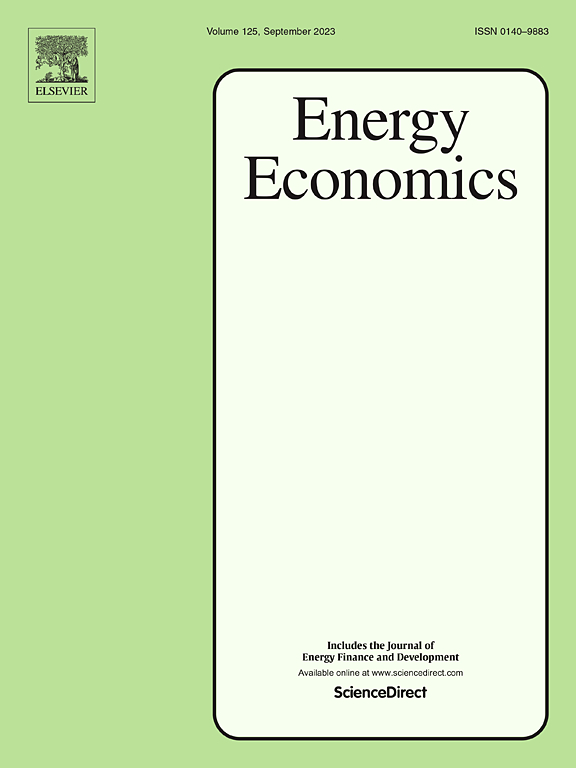“你是什么样子的?”一种数据驱动的估算环境库兹涅茨曲线的方法
IF 13.6
2区 经济学
Q1 ECONOMICS
引用次数: 0
摘要
大量关于环境退化和经济增长之间存在倒u型关系的文献——即所谓的环境库兹涅茨曲线(EKC)——提供了非常复杂的证据。这在很大程度上取决于模型和变量选择的不确定性。我们依靠贝叶斯模型平均技术来解决这些问题。我们的研究结果表明,EKC呈倒n形,几乎所有新兴经济体都在曲线的向上段显示出人均GDP与二氧化碳排放之间的正相关,而大多数发达经济体在曲线的第二个向下段。这些发现对于使用不同的环境污染测量和(非贝叶斯)LASSO回归技术是稳健的。本文章由计算机程序翻译,如有差异,请以英文原文为准。
‘What's your shape?’ A data-driven approach to estimating the Environmental Kuznets Curve
The substantial literature on the existence of an inverted U-shaped relationship between environmental degradation and economic growth—the so-called Environmental Kuznets Curve (EKC)—has produced very mixed evidence. This largely depends on model and variable selection uncertainty. We address these issues relying on Bayesian Model Averaging techniques. Our results indicate that the EKC has an inverted-N shape, with almost all emerging economies on the upward segment of the curve displaying a positive association between per-capita GDP and CO2 emissions, and most advanced economies on the second downward segment of the curve. These findings are robust to the use of different measures of environmental pollution and (non-Bayesian) LASSO regression techniques.
求助全文
通过发布文献求助,成功后即可免费获取论文全文。
去求助
来源期刊

Energy Economics
ECONOMICS-
CiteScore
18.60
自引率
12.50%
发文量
524
期刊介绍:
Energy Economics is a field journal that focuses on energy economics and energy finance. It covers various themes including the exploitation, conversion, and use of energy, markets for energy commodities and derivatives, regulation and taxation, forecasting, environment and climate, international trade, development, and monetary policy. The journal welcomes contributions that utilize diverse methods such as experiments, surveys, econometrics, decomposition, simulation models, equilibrium models, optimization models, and analytical models. It publishes a combination of papers employing different methods to explore a wide range of topics. The journal's replication policy encourages the submission of replication studies, wherein researchers reproduce and extend the key results of original studies while explaining any differences. Energy Economics is indexed and abstracted in several databases including Environmental Abstracts, Fuel and Energy Abstracts, Social Sciences Citation Index, GEOBASE, Social & Behavioral Sciences, Journal of Economic Literature, INSPEC, and more.
 求助内容:
求助内容: 应助结果提醒方式:
应助结果提醒方式:


